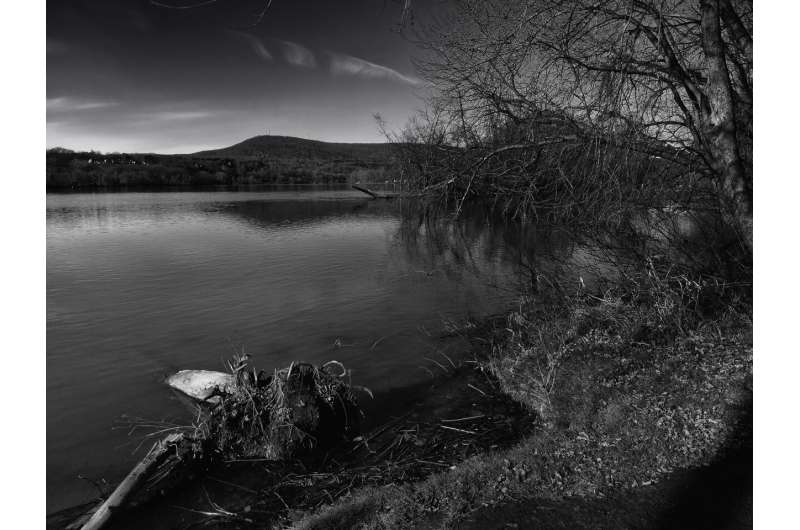This article has been reviewed according to Science X's editorial process and policies. Editors have highlighted the following attributes while ensuring the content's credibility:
fact-checked
trusted source
proofread
Aquatic weed among 'world's worst' expands in northeastern US

An article published in the journal Invasive Plant Science and Management provides new insights on a northern hydrilla (Hydrilla verticillata) subspecies (lithuanica) and its establishment outside the Connecticut River.
Considered among the "world's worst" aquatic weeds, northern hydrilla hinders recreational activities by forming dense canopies. If unchecked, it has the potential to displace native species and host a bacterium that produces a neuro toxin implicated in bald eagle and waterfowl deaths.
"The spread and establishment of yet another hydrilla subspecies in the United States is alarming," says Jeremiah Foley, an assistant agricultural scientist with the Connecticut Agricultural Experiment Station, and lead author for the study.
"Especially alarming is the negative impacts that this invasive aquatic weed can have on native aquatic and non-aquatic plant and animal species, and how quickly it's spreading."
Until 2022, this subspecies had remained undocumented outside the Connecticut River. However, by the end of 2023, researchers had documented its presence in five additional Connecticut waterbodies and one in Massachusetts.
"Significant costs are already associated with the impact and maintenance of the prior two subspecies established in the U.S. since the 1960s and 1980s," says Foley. "The discovery of Hydrilla verticillata and its subspecies lithuanica in the Connecticut River and the breadth of the current infestation represent a significant ecological invasion event with potentially far-reaching implications."
With only one exception, the newly infested sites were discovered close to or at boat-launch ramps.
"Notably, East Twin Lakes, Amos Lake, and Congamond Lakes serve as hosts for numerous annual angling tournaments, drawing participants from across the state," points out Foley. "Of particular concern are tournaments that involve travel from infested waterbodies to noninfested ones."
Thus, assessing angling tournament impacts on vectoring invasive species like Hydrilla verticillata from one waterbody to another should be considered for future research, recommends Foley. "Management efforts should prioritize early detection and prevention strategies, such as increased monitoring at boat-launch ramps and enhanced education for boaters to mitigate the spread of this invasive species."
More information: Jeremiah R. Foley et al, Northern hydrilla (Hydrilla verticillata ssp. lithuanica): discovery and establishment outside the Connecticut River, Invasive Plant Science and Management (2024). DOI: 10.1017/inp.2024.4
Provided by Cambridge University Press


















